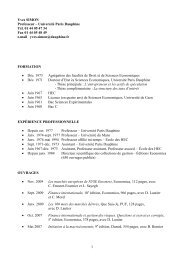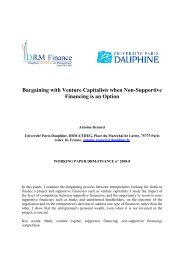Corporate governance and earnings management ... - CEREG
Corporate governance and earnings management ... - CEREG
Corporate governance and earnings management ... - CEREG
Create successful ePaper yourself
Turn your PDF publications into a flip-book with our unique Google optimized e-Paper software.
IASC <strong>and</strong> the FASB before 2001. That claim was granted without a true resistance of the<br />
actors of the German accounting. But hardly it was known that every thing was put in<br />
question by the “revolution” coming from the FAS 142. In a context of very strong resistance<br />
by the German doctrine to the new American deal the defendants of the new international<br />
order needed the “forceps” to pass the new philosophy of impairment in the expectation of its<br />
ratification by the European Union. Because of the American change the dynamic phase has<br />
been very short in Germany, at least for the sake of consolidated accounts.<br />
3.5. Phase 4: the actuarial phase (recognition with impairment)<br />
The ideal dreamed of by authors like May (1957), who had recommended non-amortization<br />
of goodwill, came true for the first time independently of any tax considerations in the United<br />
States, the leading country in financial accounting, at the end of the second half of the 20 th<br />
century.<br />
3.5.1. USA: the fourth phase: the actuarial phase (2001 - Nowadays)<br />
The adoption of an actuarial conception of accounting in the USA goes back to the concepts<br />
Statement (CS) No. 5 (FASB, 1984) <strong>and</strong> 6 (FASB, 1985). It is worth noting that at that time<br />
the Board rule out the old static exchangeability condition (CS number 6, § 26) while having<br />
“both the business combinations <strong>and</strong> conceptual framework projects on his agenda at the same<br />
time <strong>and</strong> thus may have at least been thinking about goodwill when considering how assets<br />
should be defined” (Johnson & Petrone, 1998, p. 301, note 5). But it took rather long to apply<br />
these new actuarial conception of assets. Only after more than 20 years did the revolution<br />
appear with the adoption of SFAS 141 <strong>and</strong> 142 (FASB, 2001a, 2001b) which supersede APB<br />
Opinion No. 16 <strong>and</strong> 17 (AICPA, 1970a, 1970b), <strong>and</strong> were a major event in the United States.<br />
Under these new st<strong>and</strong>ards, goodwill, whether acquired individually or in a business<br />
combination, will no longer be amortized but submitted to an impairment test, by comparing<br />
57


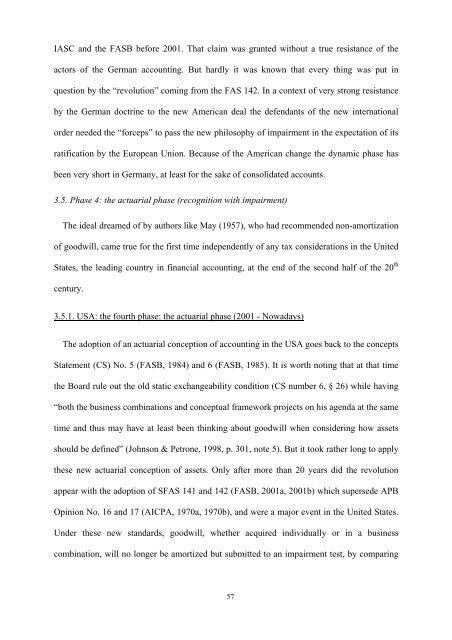
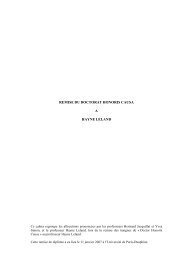

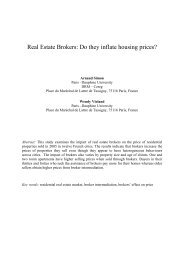
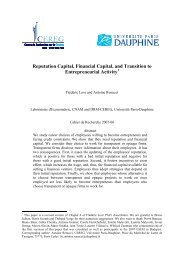

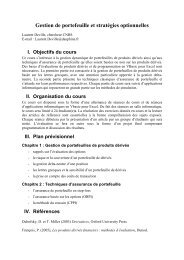


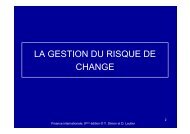
![& 6 ] ^ F ]^ - CEREG - Université Paris-Dauphine](https://img.yumpu.com/33326502/1/184x260/-6-f-cereg-universitac-paris-dauphine.jpg?quality=85)

